The bicentennial of the 1825 legislation, “An Act to establish a State Library,” that created the Indiana State Library will be observed in 2025. Since its beginnings as the office library of the Secretary of State to being housed in rooms within successive statehouses to moving to a temporary location during Statehouse construction to finally becoming its own standalone edifice, the State Library has continued collecting materials, providing information services, adapting to technology and supporting library services for Hoosiers. Prior to the state’s 2016 bicentennial year, I took a brief research dive into “The Hidden History of the Indiana State Library” to find out more about the library’s temporary quarters while Indiana’s statehouse was under construction from 1878 until 1888. Since that dive, more online resources to browse have become available.
Indiana Memory is always a great online resource for historical photographs. To find items specifically about the Indiana State Library, and not every random item hosted, digitized and/or created by the State Library, a search strategy is necessary. To start, I used the Advanced Search, enclosed the phrase “Indiana State Library” in quote marks and only searched the Subject field.
Looking through the results, there was a photograph from 1929 when Governor Harry G. Leslie signed the bill that authorized the construction of the new Indiana State Library building.
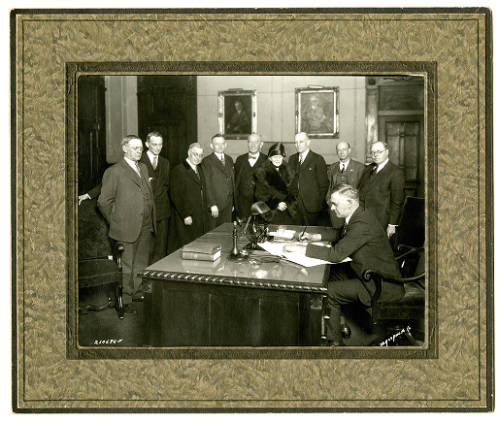
Governor Harry G. Leslie signs the library building bill, 1929-03-09. Source: Oversize Photograph Collection, Rare Books and Manuscripts, Indiana State Library.
Why was a new State Library building needed? Below is a photograph, circa 1912, showing the cramped conditions of the library inside the relatively new, at the time, Indiana Statehouse. The State Library occupied four rooms in the third floor south wing from 1888 to 1933. Around 1912, there were advocates for a separate State Library building to be built by 1916, in celebration of the state’s centennial. The rooms previously occupied by the State Library are presently offices for the Legislative Services Agency and the Indiana House of Representatives. For those familiar with the Indiana Supreme Court Law Library, the two-story stacks and balcony seem familiar. However, the Law Library was, and still is, separately located in the north wing of the third floor, near the Supreme Court chambers.
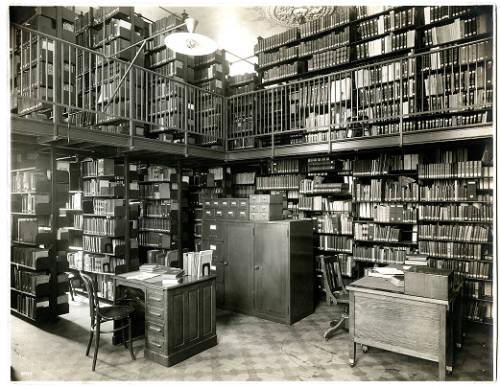
Two levels of the Indiana State Library, ca. 1912. Source: Oversize Photograph Collection, Rare Books and Manuscripts, Indiana State Library.
Another view from around 1912 shows shelves and study tables along with the Indiana Governors Portraits Collection in the background, which the library was previously responsible for collecting and maintaining.
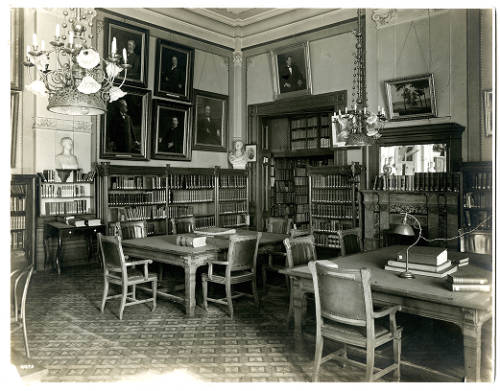
Bookshelves in the Indiana State Library, ca. 1912. Source: Oversize Photograph Collection, Rare Books and Manuscripts, Indiana State Library.
The current Statehouse is Indiana’s fourth capitol building, and third since the seat of government was moved from Corydon to Indianapolis. The building called “The Old Statehouse” was Indiana’s third capitol building from 1835 until 1877. It also housed the State Library in two rooms on the first floor, southwest corner. Around the late 1860s, several major structural issues became apparent, making plans and monies for a new statehouse critical. There are various exterior photographs of the old statehouse, particularly from when President Lincoln’s funeral train came to Indianapolis, and he lay in state inside the building. However, there are no known interior photographs of the State Library inside the old statehouse.
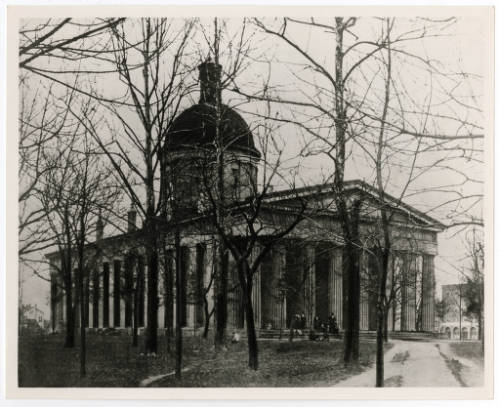
Indiana statehouse, 1835-1877. Source: General photograph collection, Rare Books and Manuscripts, Indiana State Library.

Statehouse draped for Lincoln’s funeral, 1865. Source: General photograph collection, Rare Books and Manuscripts, Indiana State Library.
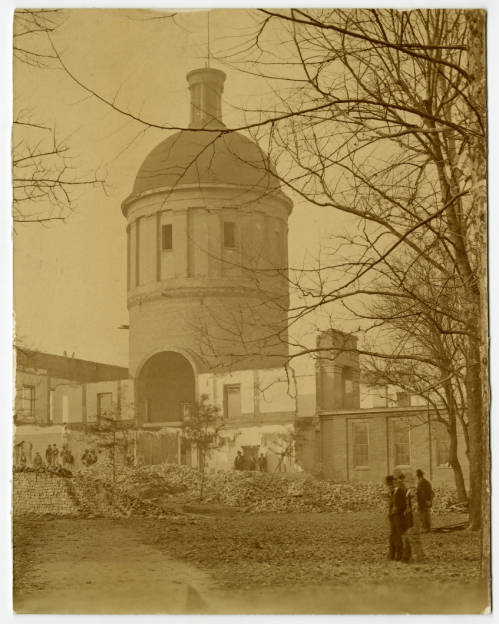
Demolition of the old statehouse, 1870s. Source: General photograph collection, Rare Books and Manuscripts, Indiana State Library.
Through Indiana Memory, researchers can access these historical photographs of the 1934 building under construction, completed and the 1976 addition.
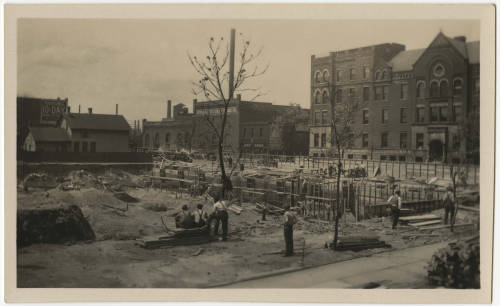
Indiana State Library foundation work, 1933. Image courtesy of Ball State University. University Libraries. Andrew Seager Archives of the Built Environment.
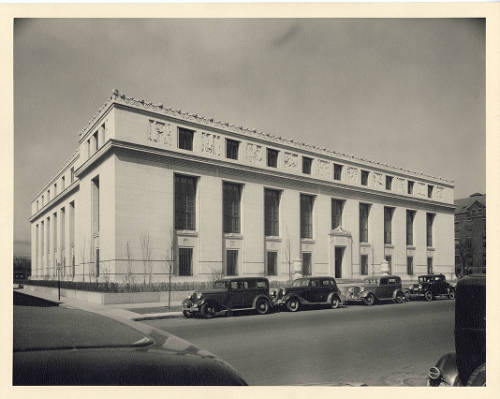
Exterior of the Indiana State Library building, after 1934. Source: Oversize Photograph Collection, Rare Books and Manuscripts, Indiana State Library.
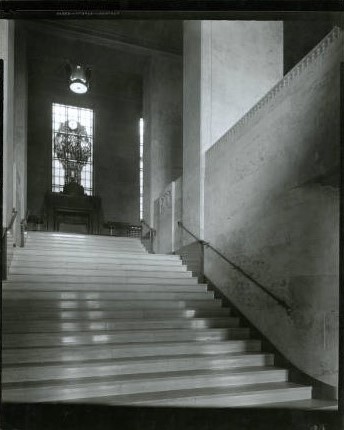
Entrance to the Indiana State Library. Source: Oversize Photograph Collection, Rare Books and Manuscripts, Indiana State Library.
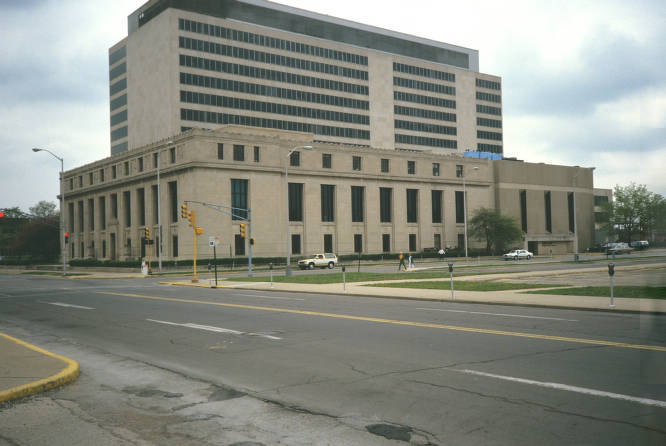
Indiana State Library and Historical Building with 1976 addition. Image courtesy of Indiana Landmarks Historic Architecture Collection.
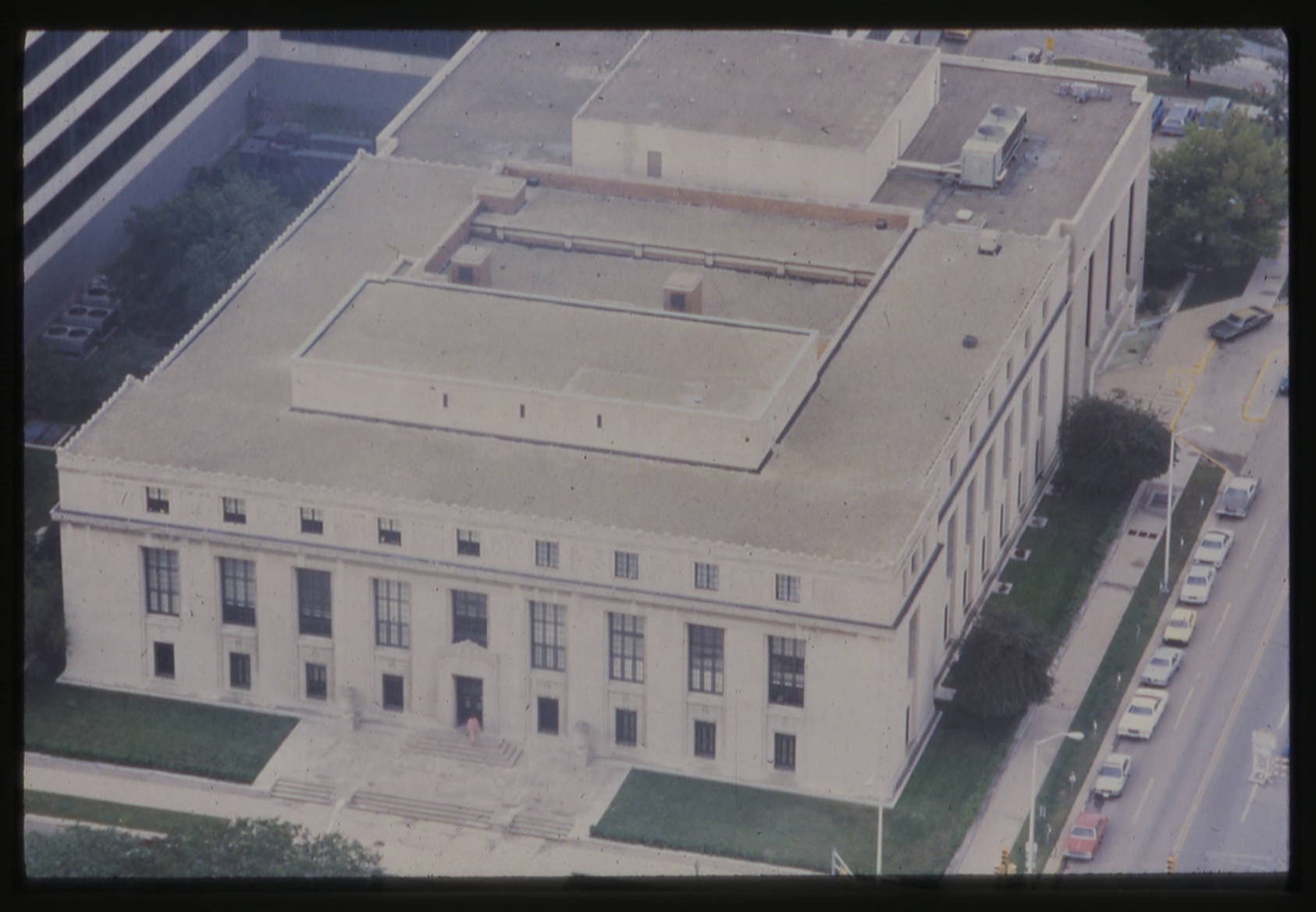
Indiana State Library and Historical Building, Indianapolis, Indiana, 1984. Source: Indiana State Library slideshow, Genealogy Division, Indiana State Library.
Take a video tour of the Indiana State Library here. We look forward to celebrating 200 years of the Indiana State Library’s existence as a department within Indiana’s state government.
This post was written by Andrea Glenn, Indiana Division librarian and state documents coordinator at the Indiana State Library.


